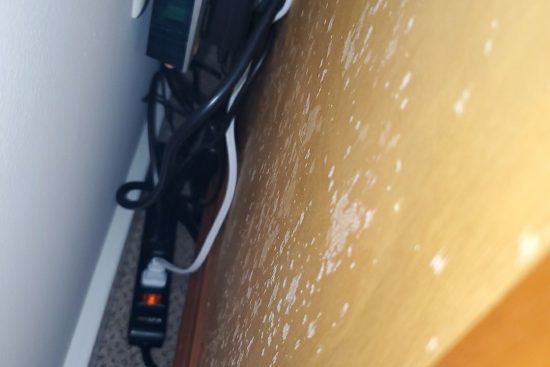
Pervasive in its presence and hazardous in its consequences, excessive moisture can not only damage your property and negatively impact your overall indoor air quality, but it can also cause continuous complications by way of mold growth.
The trick, then, is knowing where to look. After all, not all areas of moisture or water damage are going to be sitting in plain sight.
CAUSES AND CONCERNS
Here in Florida, we may consider summer to be the season wherein we are most vulnerable to moisture intrusion as a result of the relentless seasonal humidity. But the causes of indoor dampness are not only related to the weather but your ability to adapt your home to it, particularly as the cooler months approach.
“Dampness becomes a problem when various materials in buildings become wet for extended periods of time,” the Centers for Disease Control (CDC) explains. “Excessive moisture in the air (i.e., high relative humidity) that is not properly controlled with air conditioning can also lead to excessive dampness.”
That is, your HVAC system or air conditioning habits may also cause or exacerbate existing indoor moisture. Moreover, leaking pipes or other structural deficiencies in your home (such as cracks in your roof) may also cause water incursion and damage in hidden places.
By checking these primary elements of your home, you can begin to find clues that point to where water damage may have already occurred.
AREAS FOR ASSESSMENT
Identifying hidden areas that are vulnerable to — or are already the victim of — excessive moisture can be tricky, as you spend plenty of time at home, and may therefore, have a difficult time physically feeling the difference between one spot and another.
Thus, we encourage you to check these spots for mildewy smells, as well as the visible presence of mold.
“Mold may be hidden in places such as the backside of drywall, wallpaper, or paneling, the top side of ceiling tiles, the underside of carpets and pads, etc,” according to the Environmental Protection Agency (EPA). “Other possible locations of hidden mold include areas inside walls around pipes (with leaking or condensing pipes), the surface of walls behind furniture (where condensation forms), inside ductwork, and in roof materials above ceiling tiles (due to roof leaks or insufficient insulation).”
We also recommend checking windowsills, the area beneath your dishwasher, crevices around your bathtub and sink, as well as front-loading washers, as all of these areas are already vulnerable to high volumes of moisture.
PLANNING WITH PROFESSIONALS
Even with a bevy of tips and tricks at your disposal, it can be easy to overlook areas of your home, or otherwise find yourself confused over what, exactly, you’ve found. That’s why we recommend calling Luce Air Quality, your local indoor environmental experts!
Our team has a certified history of performing comprehensive water damage and mold investigations, thereby empowering you with the knowledge and answers you need to create the healthiest home possible for you and your family.
If you’re ready to schedule your assessment, or if you have further questions regarding moisture and water intrusion in your home, contact Luce Air Quality today by calling (904) 803-1014!


